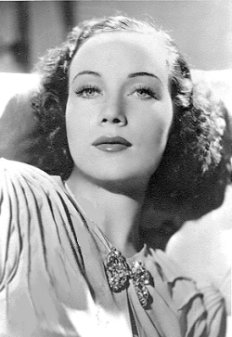


|
|

|
|
THE "SIREN OF THE FJORDS" On May 17, 1911, as Norway was jubilantly celebrating its Constitution Day, two Norwegian citizens were born in Flatbush, a sector of Brooklyn, New York. They were twins. The birth of twins is, in itself, uncommon. That one child would be a male and the other a female is an exceedingly rare occurrence. That a male twin and a female twin would each gain worldwide attention, each associated with accomplishments disparate from that of the other, might well be unprecedented. The boy was Knut Haukelid . He was to become a leader of the Norwegian underground during World War II and is given major credit for blocking the Germans from producing and shipping "heavy water," essential to their objective of developing the atomic bomb. His exploits were depicted in the 1965 movie, "The Heroes of Telemark." The daughter, born to Bjørgulv and Sigrid Haukelid, was never depicted in a movie. Rather, her destiny was to star in movies. Sigrid Guri Haukelid was to become Sigrid Gurie. At the time the twins were born, their father, Bjørgulv Haukelid, was working as a civil engineer with the New York Subway System, a job he had held since 1902. He left that job when the twins were less than a year old, and the Hauklids set sail for Norway. Sigrid was to be educated in Norway, Sweden and Belgium.
In 1936, she
arrived in Hollywood. While Norwegians, from Leif
Ericson to Sally Ride, have been known as
"discoverers," Sigrid Gurie was a "discoveree";
film magnate Sam Goldwyn took credit for
discovering her. He billed her as "the siren of
the fjords," and proceeded to cast this Norwegian
beauty as — what else? — a Chinese
princess. She starred with Gary Cooper in the
1938 production of "The Adventures of Marco
Polo."
Below: two fan magazines featuring Gurie and
Cooper
Another
cousin of the late star,
Rolf Hoeiberg, from
Porsgrunn, in Telemark, Norway, adds this
information:
Algiers (1938) Rio (1939) The Forgotten Woman (1939) Three Faces West (1940) Dark Streets of Cairo (1941) Enemy of Women (1944) A Voice in the Wind (1944) Sofia (1948)
Sword of the Avenger (1948) |
CLICK BELOW RETURN TO THE...

(c) Roger M. Grace, 2000-2003